15.01.2020
SpaceX’s brisk Starlink launch cadence to continue next week 20.Jan.
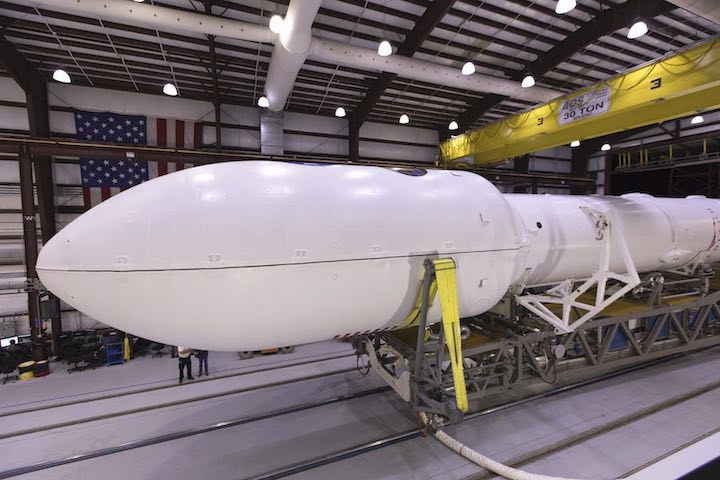
SpaceX plans to launch its next group of Starlink broadband satellites aboard a Falcon 9 rocket as soon as Monday, Jan. 20, from Cape Canaveral, two days after the company is scheduled to launch a modified Falcon 9 booster from a separate facility at the Florida spaceport to test the Crew Dragon spaceship’s emergency escape system.
SpaceX’s ability to achieve back-to-back launch schedule hinges on several factors, including an expected test-firing in the coming days of the Falcon 9 booster slated to fly on the next Starlink launch.
But assuming everything goes according to plan, SpaceX aims to perform launches from two pads on Florida’s Space Coast as soon as Saturday and Monday.
SpaceX has already test-fired the Falcon 9 booster assigned to the Crew Dragon capsule abort test at launch pad 39A at NASA’s Kennedy Space Center.
Technicians inside a hangar near pad 39A are attaching the Crew Dragon spaceship to the Falcon 9 rocket this week, in advance of its return to the launch complex before a countdown rehearsal Friday, during which two NASA astronauts will practice launch day procedures before climbing aboard the next Crew Dragon spaceship for a flight to the International Space Station.
The Falcon 9 is scheduled to lift off from pad 39A — without astronauts on-board — during a four-hour window opening at 8 a.m. EST (1300 GMT) Saturday. About a minute-and-a-half after launch, the first stage’s nine Merlin 1D engines will be programmed to switch off, and SuperDraco thrusters on the Crew Dragon capsule mounted atop the rocket will ignite to propel the human-rated ship away from the Falcon 9.
The maneuver will demonstrate the Crew Dragon’s ability to carry astronauts away from a launch emergency, and builds on a pad abort test in 2015 to simulate the Crew Dragon’s abort system performance during an emergency before liftoff.
SpaceX will recover the Crew Dragon capsule from the Atlantic Ocean after it splashes down under parachutes around 20 miles (32 kilometers) offshore. The Falcon 9 rocket, flying with a previously-used first stage booster, is expected to be destroyed.
Meanwhile, teams at pad 40 at Cape Canaveral Air Force Station — located a few miles to the south of pad 39A — are preparing a separate Falcon 9 rocket for liftoff as soon as Monday, Jan. 20, sources said.
The Jan. 20 launch will haul the next batch of approximately 60 Starlink satellites into orbit for SpaceX’s global broadband Internet network. Assuming the mission remains on schedule, liftoff time Jan. 20 is expected at 12:20 p.m. EST (1720 GMT).
The two upcoming launches from Florida’s Space Coast will mark the second and third missions of the year for SpaceX, which says it could perform 35 or more launches in 2020, including flights carrying new Starlink broadband satellite into orbit as often as every two weeks.
SpaceX conducted 21 launches in 2018, the most missions in a single year in the company’s history. The company launched 13 missions last year.
The dual launches planned by SpaceX in the next week are not the only major activities scheduled at Cape Canaveral.
United Launch Alliance plans to roll an Atlas 5 rocket out of its vertical hangar at pad 41 — located between SpaceX facilities at pad 39A and pad 40 — as soon as Monday for a practice countdown Tuesday, Jan. 21, ahead of the launcher’s scheduled liftoff Feb. 5 with the joint NASA-European Space Agency Solar Orbiter mission, a robotic science probe designed to observe the sun.
Quelle: SN
----
Update: 20.01.2020
.
At Cape Canaveral Air Force Station's Launch Complex 40, meanwhile, SpaceX teams are still slated to launch yet another Falcon 9 rocket Tuesday on a mission to deliver 60 Starlink internet communications satellites to low-Earth orbit. That launch is expected at 11:59 a.m.
Quelle: Florida Today
----
Update: 21.01.2020
.
SpaceX-Starlink-4-Launch 22.01.2020
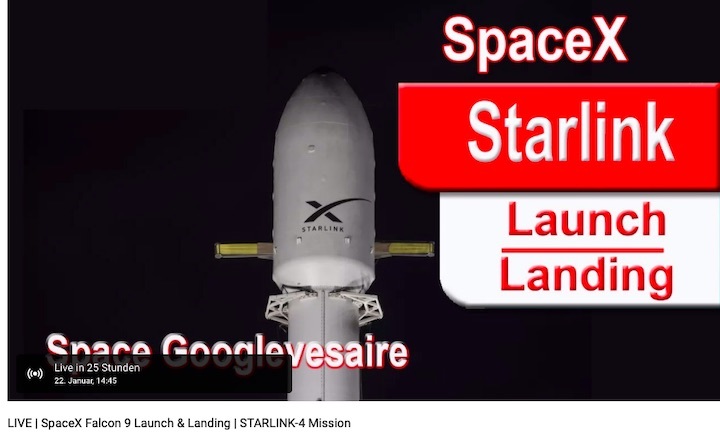
Quelle: YouTube
----
Update: 22.01.2020
.
SpaceX test-fires rocket for next Starlink mission; launch date under review
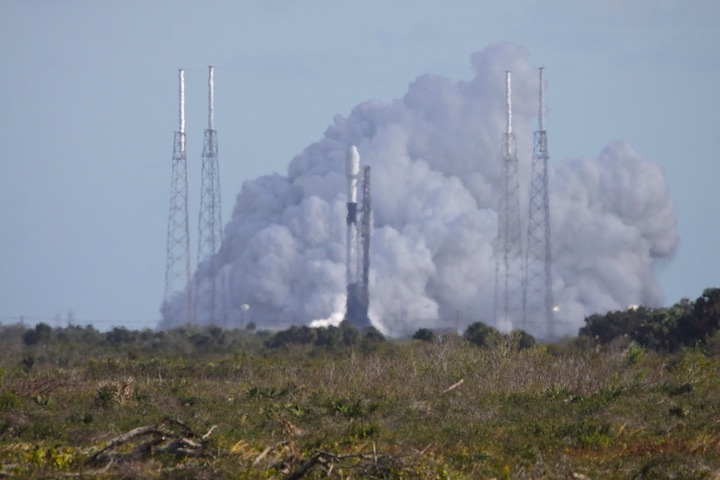
Just one day after a mission from a nearby launch pad, SpaceX test-fired a Falcon 9 rocket Monday at Cape Canaveral Air Force Station ahead of the company’s next flight. Faced with extreme weather this week in the ocean recovery zone for the Falcon 9’s first stage booster and payload shroud, SpaceX said it was evaluating the best opportunity to launch the Falcon 9 with 60 Starlink broadband satellites.
SpaceX is not expected to attempt to launch the mission Tuesday as previously scheduled.
SpaceX’s launch team presided over an automated countdown sequence Monday afternoon. After SpaceX filled the rocket with densified, super-chilled kerosene and liquid oxygen, the countdown culminated in ignition of the Falcon 9 rocket’s nine Merlin 1D main engines at 2 p.m. EST (1900 GMT).
The engines fired several seconds and built up to 1.7 million pounds of thrust while hold-down clamps ensured the Falcon 9 remained on the ground. The engines shut down as a towering cloud of exhaust and steam rose above Cape Canaveral’s Complex 40 launch pad.
In a tweet later Monday, SpaceX confirmed the completion of the static fire test, a standard milestone in all of the company’s launch campaigns. For Monday’s test-firing, the Starlink satellite payloads and the Falcon 9’s nose shroud were mated to the top of the Falcon 9 rocket.
SpaceX has not test-fired rockets with customer payloads since an Israeli communications satellite was destroyed when a Falcon 9 exploded during a countdown for a static fire test in September 2016. But the Starlink satellites are built and owned by SpaceX, leaving that decision on Starlink missions entirely up to company managers.
The Falcon 9 was scheduled to lift off as soon as Tuesday at 11:59 a.m. EST (1659 GMT), but SpaceX said the company’s launch team is evaluating the best launch opportunity “due to extreme weather in the recovery area.”
SpaceX has dispatched ships to positions in the Atlantic Ocean northeast of Cape Canaveral for a propulsive vertical landing of the Falcon 9’s first stage booster and recovery of the rocket’s payload fairing. Fast-moving vessels fitted with giant nets will try to catch the fairing, which splits off the rocket in two halves a few minutes after launch and descends back to Earth under parachutes.
The first stages of Falcon 9 rockets are regularly reused multiple times, and SpaceX has begun retrieving fairings, and reused the nose shroud for the first time last year in a bid to reduce launch costs.
The 60 Starlink satellites slated to launch on the next Falcon 9 rocket will join 180 others delivered to orbit on three previous missions in May, November and Jan. 6.

SpaceX is deploying the Starlink fleet, which may eventually number thousands of satellites, to beam broadband Internet signals to worldwide consumers. The company, founded and led by billionaire Elon Musk, expects to find customers in remote regions without reliable Internet service, plus airliners, ships and military forces.
Each of the Starlink satellites weighs about a quarter-ton and use krypton ion thrusters for maneuvers in orbit. The spacecraft are built at a SpaceX factory in Redmond, Washington.
SpaceX says it hopes to begin regional broadband service to Canada and the northern United States with the partially-complete Starlink constellation around the middle of this year, once it has launched 12 Starlink missions. The company says Starlink service for Internet consumers worldwide will come after 24 launches.
SpaceX plans to build out an initial block of 1,584 Starlink satellites in orbit 341 miles (550 kilometers) above Earth. But the company could launch many more if there’s sufficient market demand, and SpaceX has regulatory authority from the Federal Communications Commission to operate as many as 12,000 broadband satellite at different altitudes in low Earth orbit.
Starlink missions are expected to make up the majority of SpaceX’s launches this year. The company says it could launch more than 20 Starlink missions in 2020, plus Falcon 9 and Falcon Heavy flights for NASA, the U.S. military and commercial customers.
The upcoming Starlink mission will mark SpaceX’s third launch of the year, following a previous Starlink launch on a Falcon 9 rocket Jan. 6, and another Falcon 9 flight Sunday from the Kennedy Space Center to test the launch escape system on SpaceX’s human-rated Crew Dragon capsule.
Quelle:SN
+++
Start verschoben auf 24.01.2020
+++
SpaceX still targeting this week for next Starlink launch from Cape Canaveral
SpaceX is still targeting this week for the launch of 60 Starlink communications satellites from Cape Canaveral Air Force Station, according to a weather forecast issued by the 45th Space Wing.
A Falcon 9 rocket is expected to launch from Launch Complex 40 during a 10-minute window slated to open at 10:49 a.m. Friday. Forecasters are expecting 80% "go" conditions for liftoff, though upper-level winds, which are not included in initial forecasts, could pose a threat.
"Onshore moving cumulus clouds and the potential for brief coastal showers will be the main concern during the launch window on Friday," forecasters said Tuesday. "Maximum upper-level winds will be from the southwest at 110 knots near 39,000 feet."
After liftoff, the rocket's first stage will target a landing on the Of Course I Still Love You drone ship stationed in the Atlantic Ocean. Liftoff was originally planned for Tuesday, but had to be delayed due to powerful winds in the landing zone.
More: 321 Launch: The space content you might have missed over the past week
This will mark the fourth full Starlink mission for SpaceX, which is part of the company's effort to deliver wireless internet connectivity for users on the ground. If successful, Friday's flight will push the constellation to about 240 satellites, further cementing its position as the world's largest operator by number on orbit.
After Starlink, a United Launch Alliance Atlas V rocket on Feb. 5 will boost Solar Orbiter on a path toward the sun. The joint mission between the European Space Agency and NASA will study the sun's heliosphere, or region of influence.
Quelle: Florida Today
----
Update: 23.01.2020
.

Quelle: SpaceX
----
Update: 25.01.2020
.
SpaceX again delays next launch from Cape Canaveral due to weather
SpaceX has again delayed its next Falcon 9 launch from Cape Canaveral Air Force Station, citing inclement weather in the area of the Atlantic Ocean hosting the booster landing.
"Weather in the recovery area continues to be unfavorable so team is now targeting Monday, January 27 for launch of Starlink," SpaceX said Thursday.
Liftoff time from Launch Complex 40 is slated for no earlier than 9:49 a.m. Monday.
SpaceX was also targeting this Tuesday for the mission with 60 Starlink satellites destined for low-Earth orbit, but had to delay due to the same reason. Flights that include booster landings, which are most SpaceX missions these days, don't just factor in launch weather – teams have to look at conditions in the Atlantic Ocean, too, which is where the Of Course I Still Love You drone ship is stationed to retrieve boosters.
A weather forecast for Monday's attempt is expected Friday.
This mission will mark the fourth full flight of a Falcon 9 with 60 Starlink satellites, bringing SpaceX's constellation to 240 satellites in low-Earth orbit. The initiative is designed to transmit broadband internet connectivity for everyday users down to the ground, bypassing complicated infrastructure and covering underserved regions. SpaceX could open up service as soon as this year.
SpaceX delays Falcon 9 launch to Monday, will send Starlink satellites into space
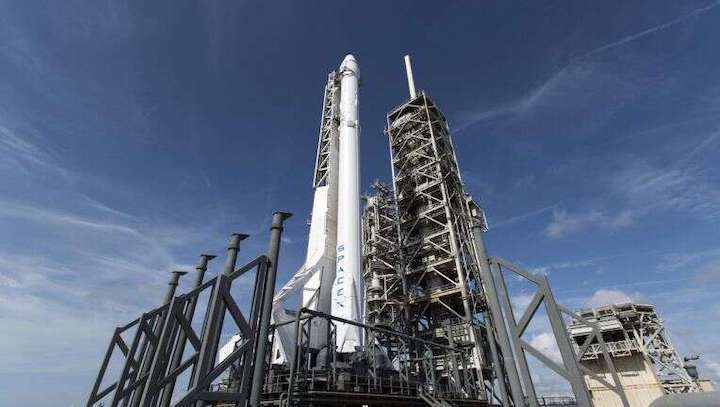
CAPE CANAVERAL, Fla. - SpaceX is expected to launch its Falcon 9 rocket into space on Monday morning.
This launch has been pushed several times and is now scheduled for 9:49 a.m. EST on Monday.
The Falcon 9 rocket will carry Starlink communication satellites into space. These satellites help less developed nations have internet access.
The launch comes off the heels of a successful abort test launch. On Sunday, SpaceX completed a successful abort test launch of their Dragon crew capsule. The launch served as one of the final steps before SpaceX and NASA can send astronauts back into space. They simulated what would happen during a disaster, as the Dragon crew capsule separated from the Falcon 9 rocket and deployed parachutes for a gentle splashdown.
Given the success of the test, the chief engineer/designer of SpaceX, Elon Musk, said that it is probable that the first crewed launch will occur in the second quarter of 2020. However, NASA still needs to decide if this mission will be for a shorter or longer duration, as this will affect the launch date.
Quelle: FOX35
----
Update: 27.01.2020
.
SpaceX Falcon 9 Starlink 4 launch
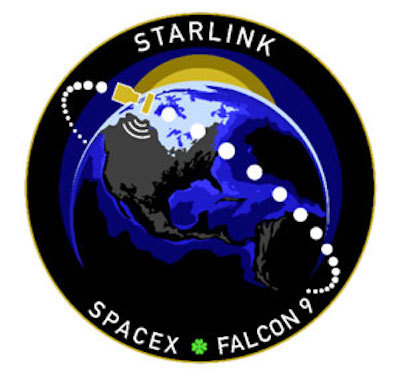
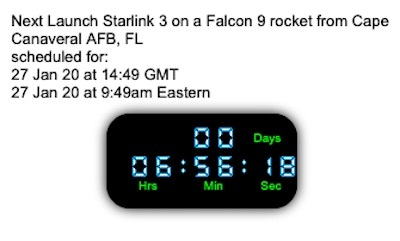
+++
Update: 28.01.2020
,
Weather still a concern for SpaceX Starlink launch from Cape Canaveral
The weather forecast continues to be a concern for SpaceX's next Falcon 9 launch, a Monday mission slated to boost 60 Starlink satellites from Cape Canaveral Air Force Station.
If SpaceX pushes forward with the 9:49 a.m. liftoff from Launch Complex 40, the 45th Weather Squadron estimates 50% "go" conditions during the five-minute window.
"The main concerns during the launch window will be disturbed weather and thick clouds," forecasters said Sunday. "Max upper-level winds will be westerly at 135 knots near 35,000 feet."
Not factored into liftoff "go" percentages, however, are those upper-level winds, which can pose a serious threat to rockets and payloads. SpaceX teams will need to keep an eye on upper-level data to see if the wind speeds slow down or change direction.
More: How to see SpaceX's Starlink satellites after liftoff from Cape Canaveral
More: Launch schedule: Upcoming Florida rocket launches and landings
If the launch delays to Tuesday, conditions look much more favorable – 80% "go" on the ground with upper-level winds expected at 85 knots near 39,000 feet.
This will mark the fourth mission for the company's Starlink constellation, an initiative designed to beam internet connectivity down to the ground for remote and underserved users. If successful, the next flight will boost the network's size to 240 satellites in low-Earth orbit.
At Launch Complex 41, meanwhile, United Launch Alliance teams continue to prep an Atlas V rocket for its next launch. The company will now target Feb. 7 – a two-day delay – to launch Solar Orbiter, a joint mission between the European Space Agency and NASA. The spacecraft will study the heliosphere, or sun's region of influence.
Quelle: Florida Today
----
Update: 29.01.2020
.
Erfolgreicher Start von SpaceX’s Falcon-9 mit 4.Starlink Satelliten
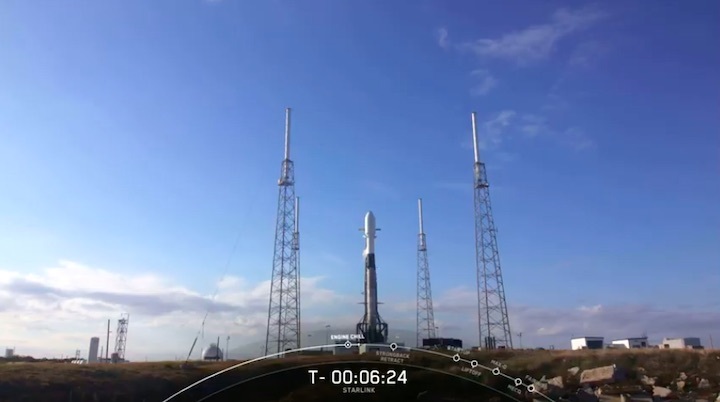
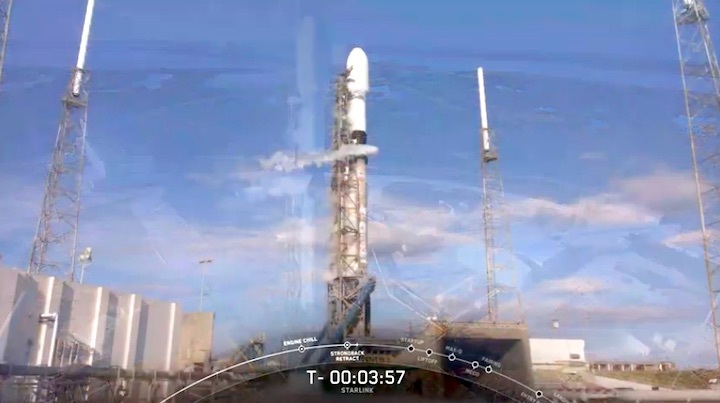
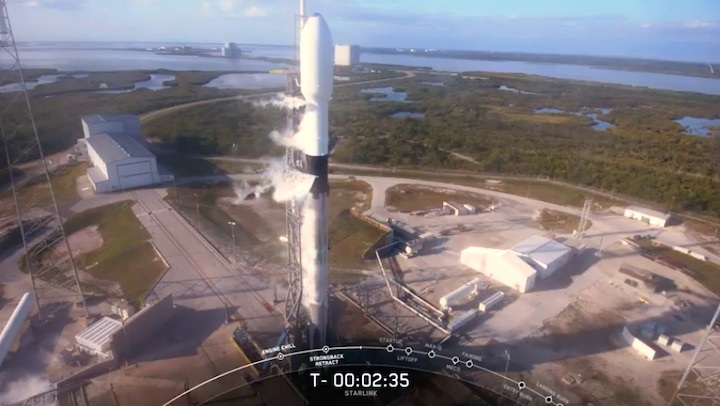
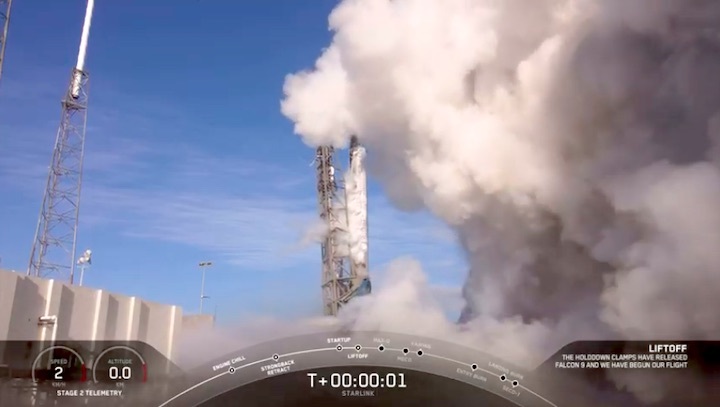
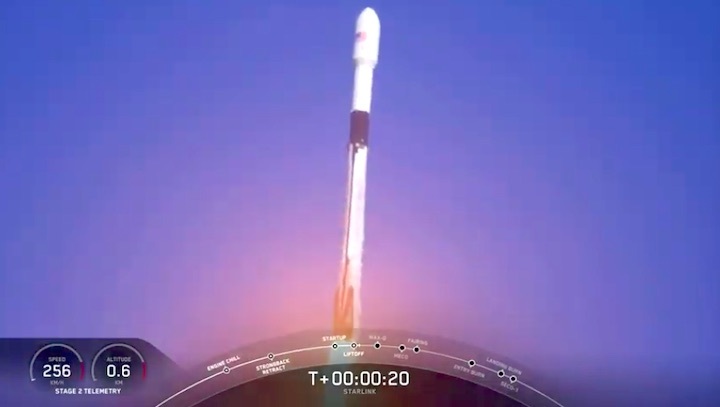
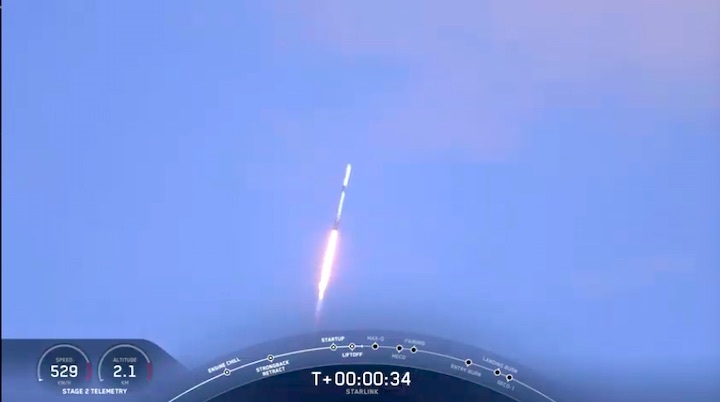
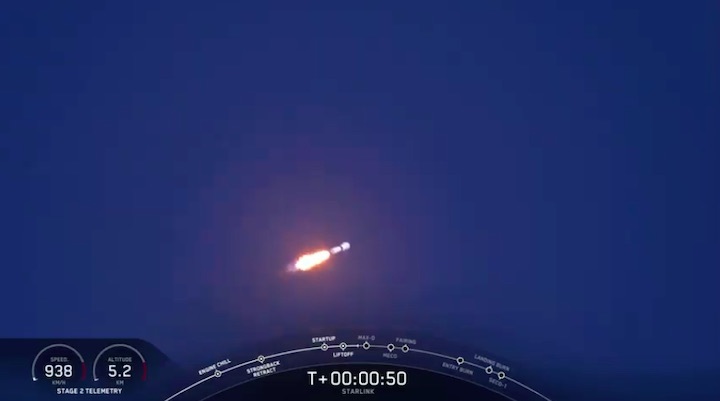
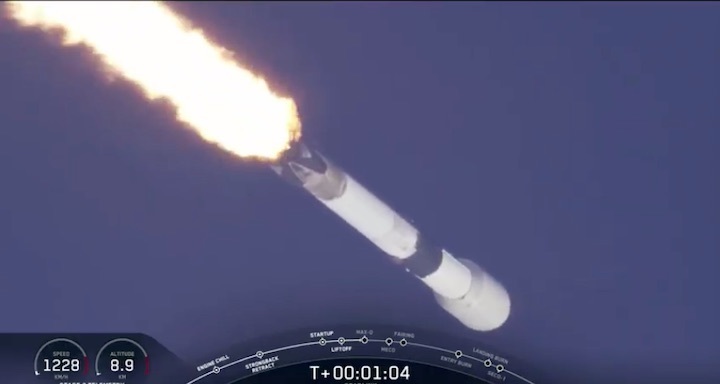
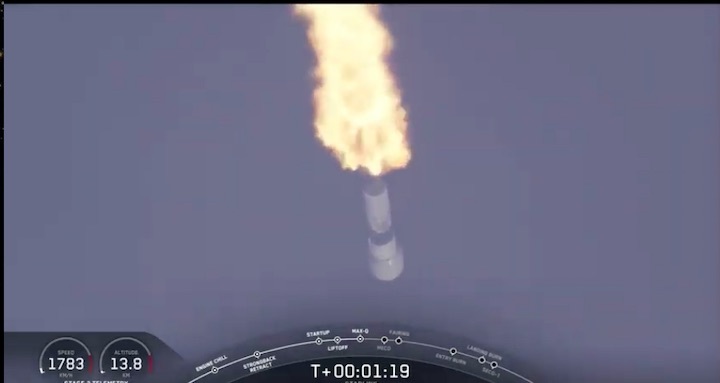
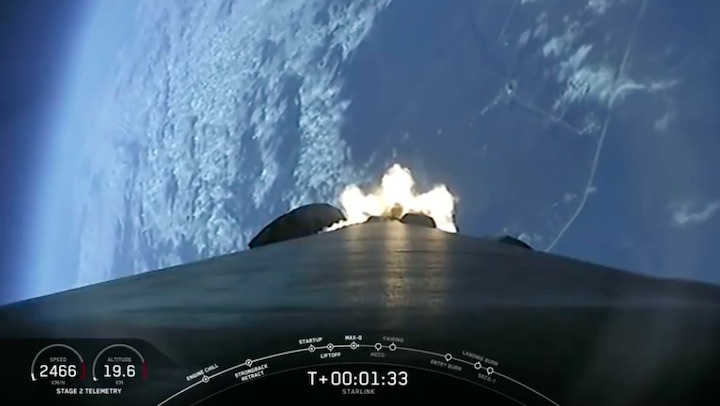
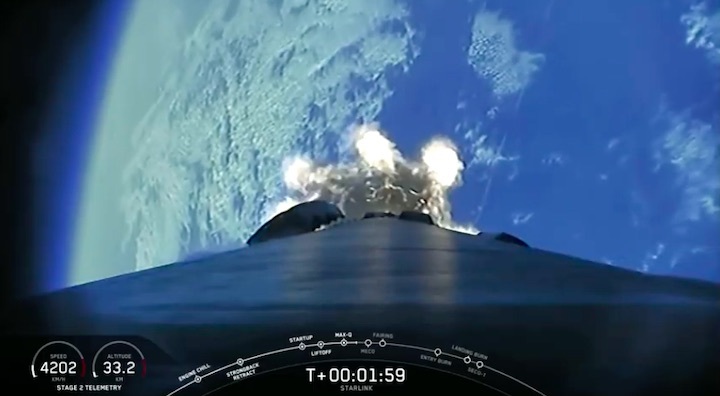
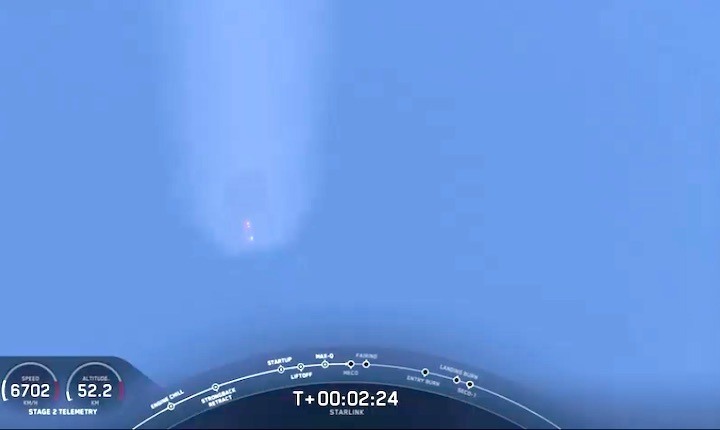
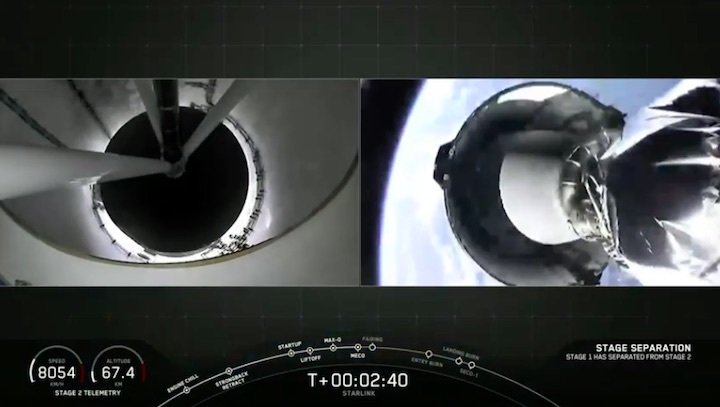
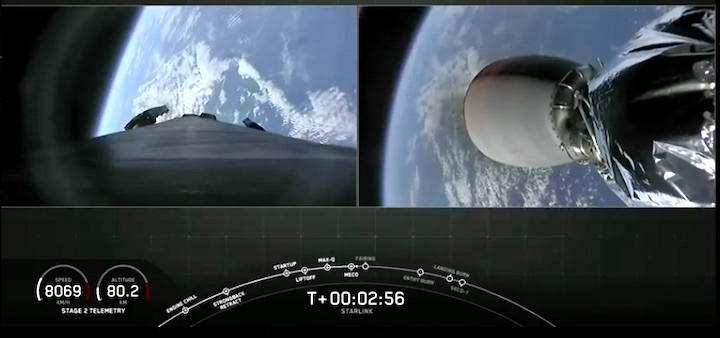

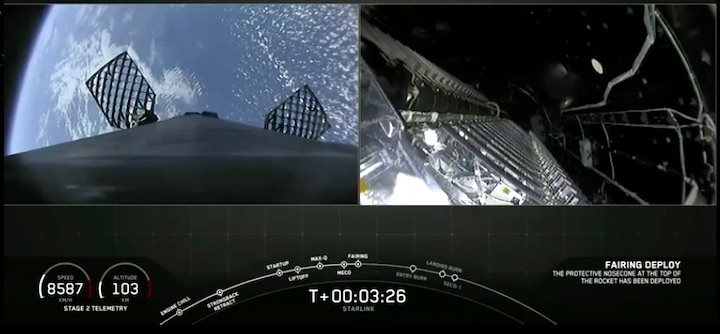


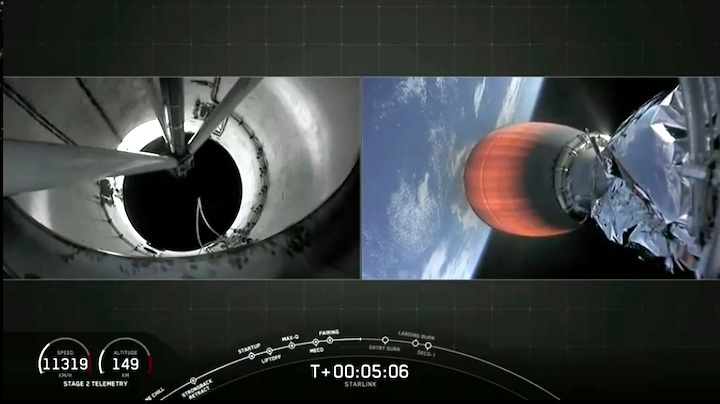
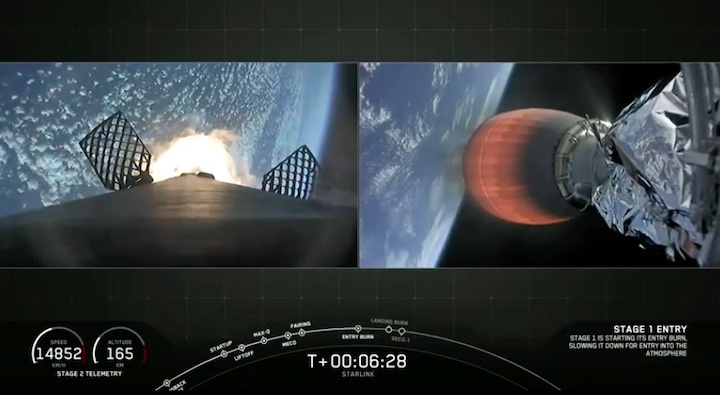
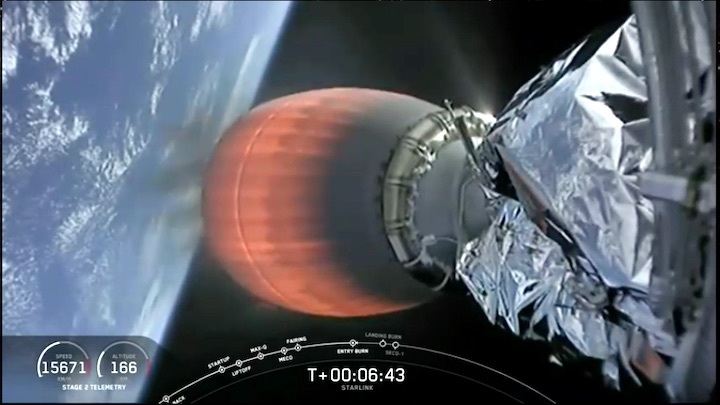
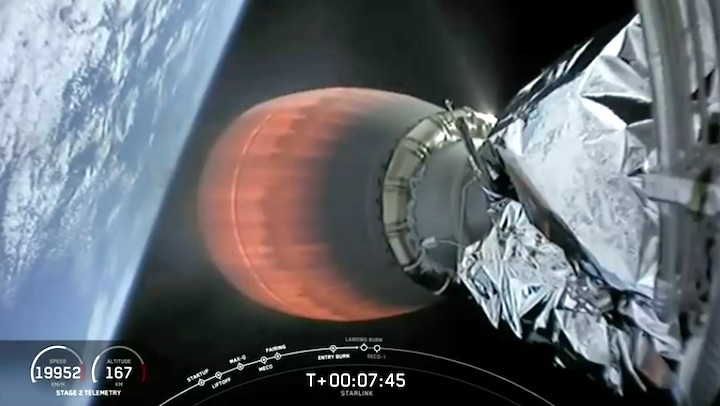
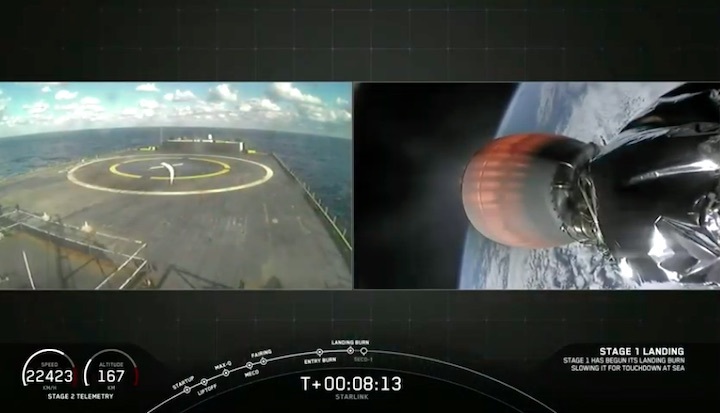
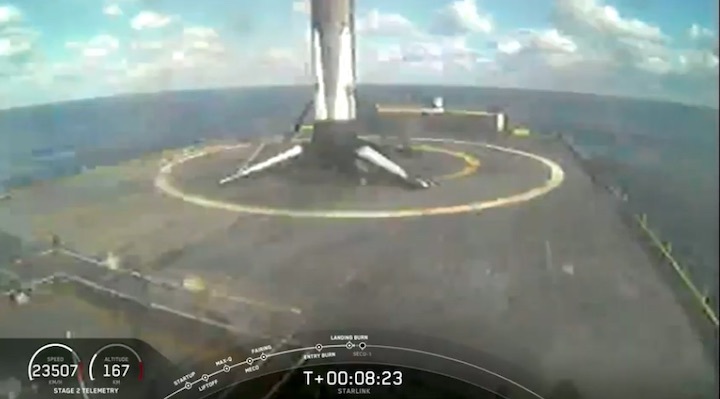

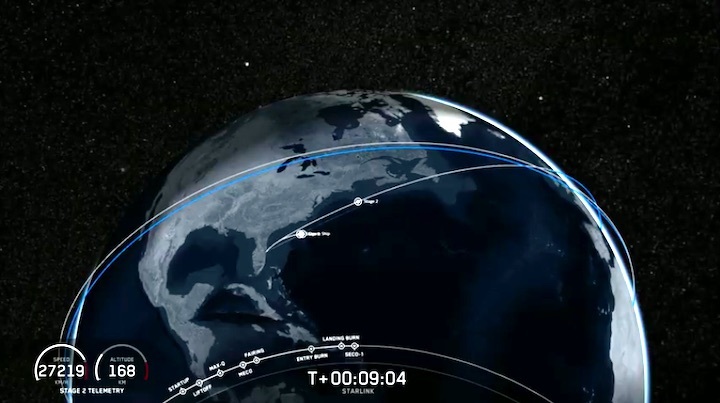
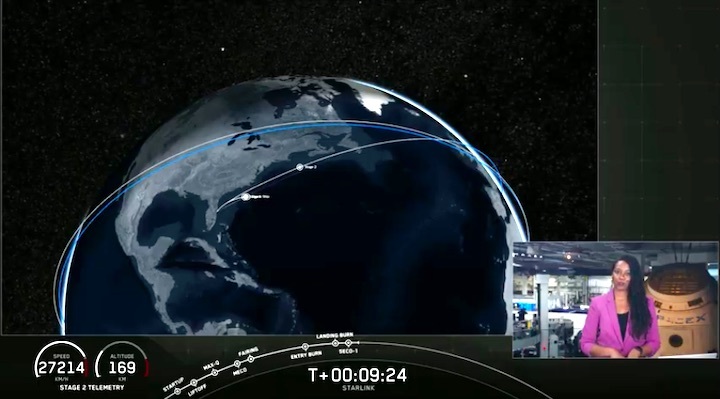
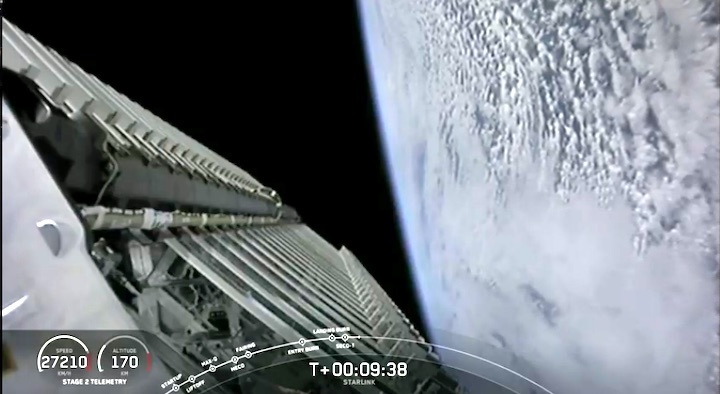
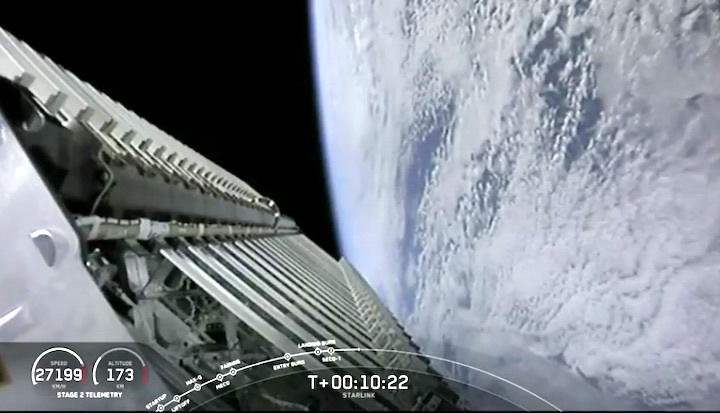
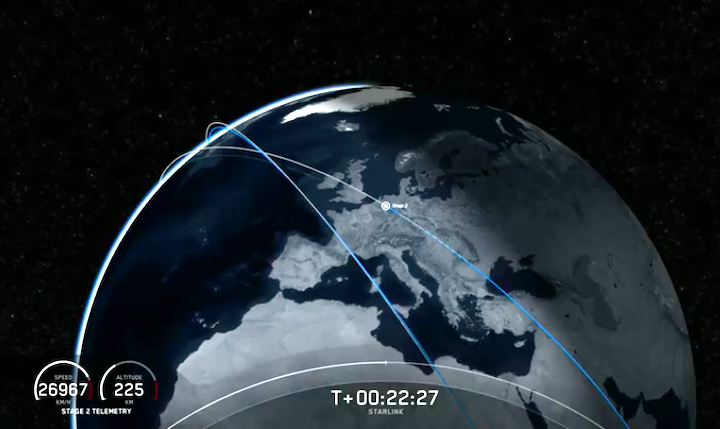
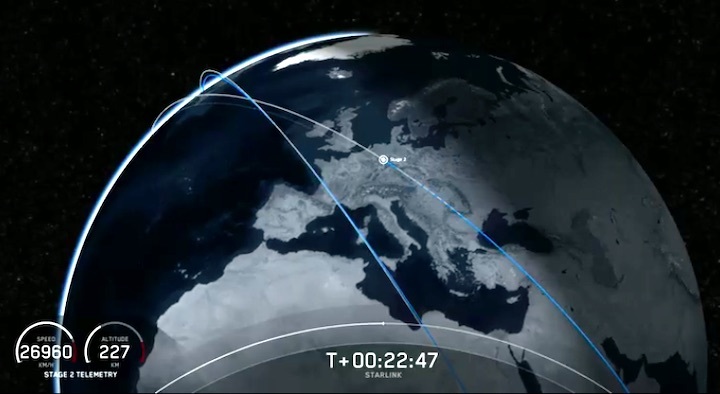
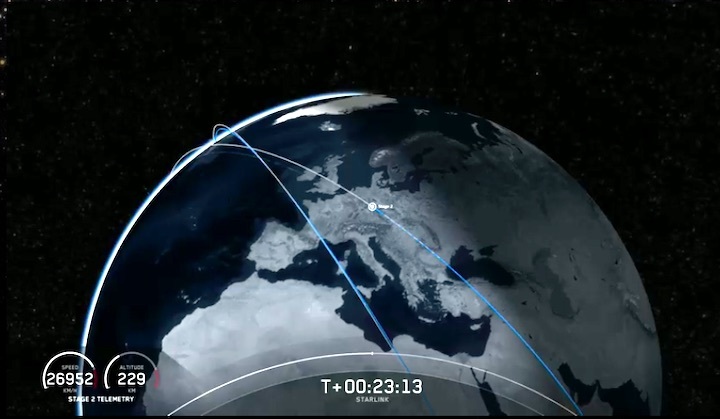
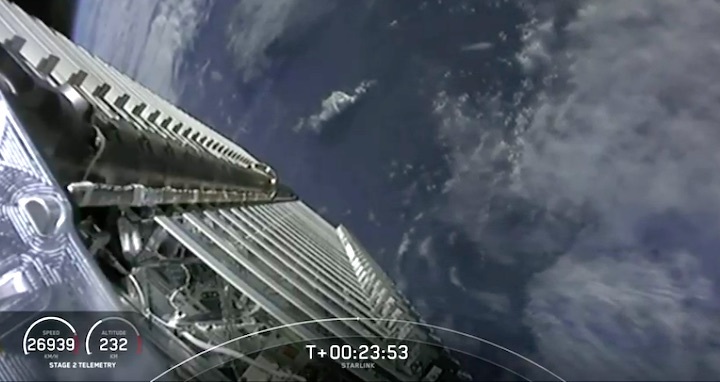
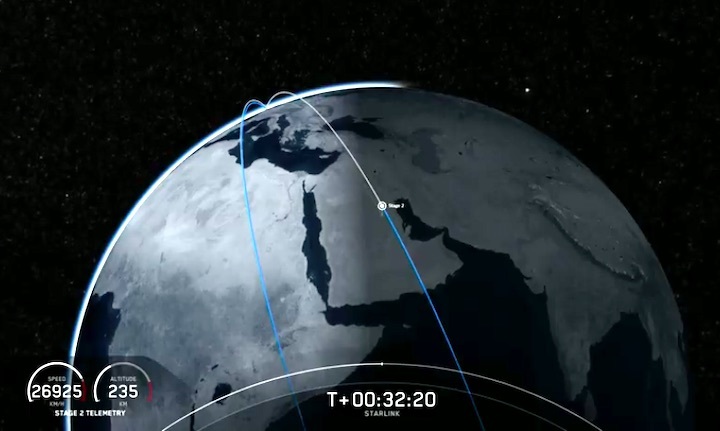
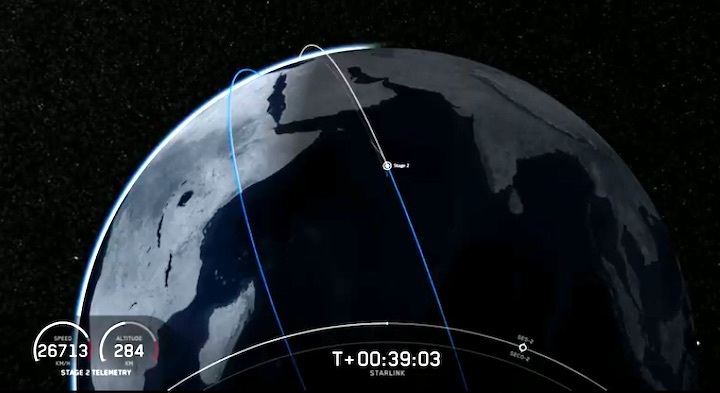
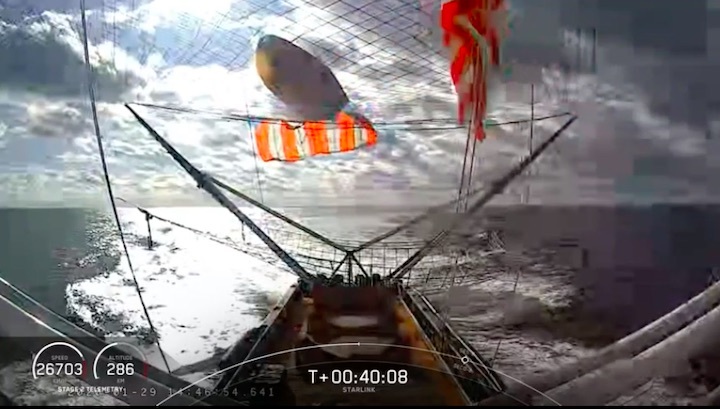
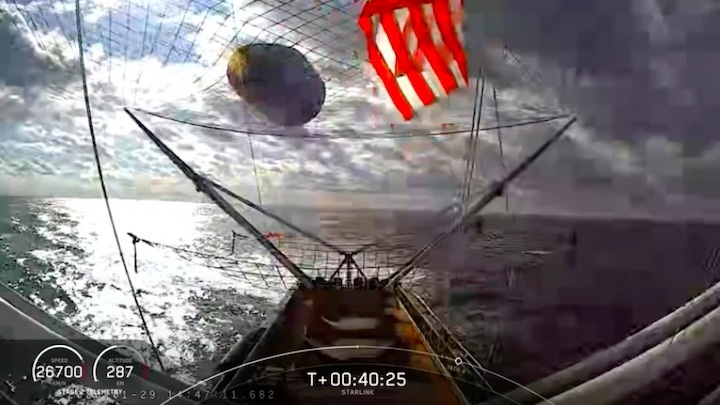
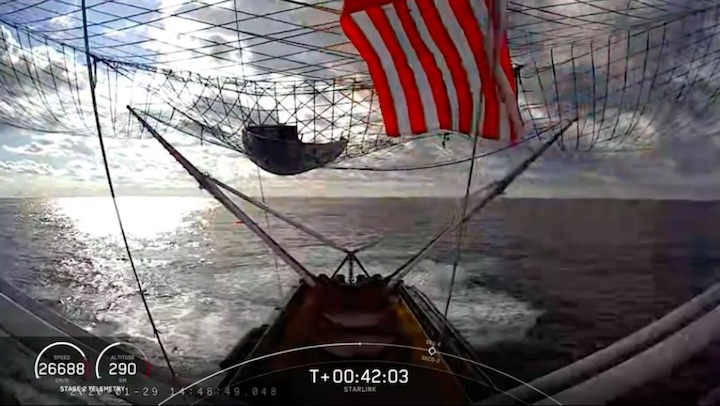
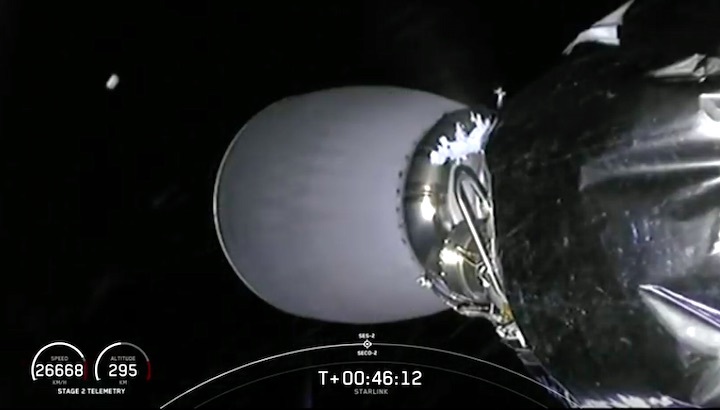
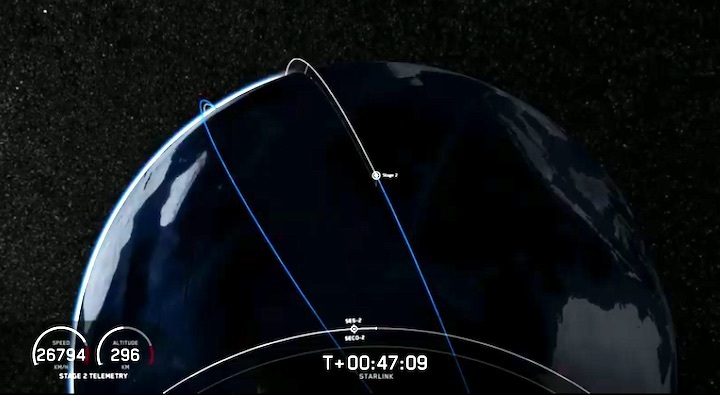
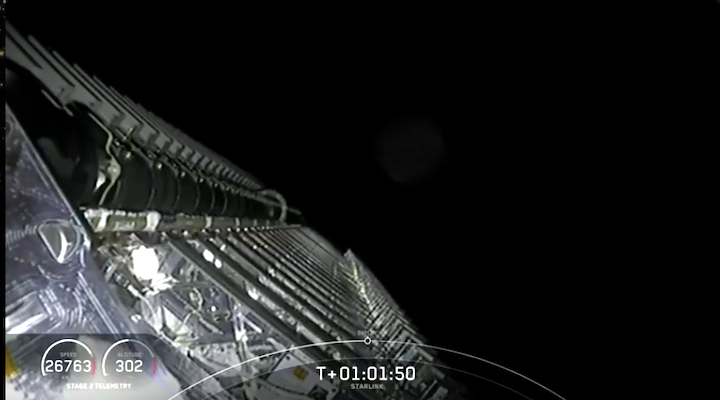
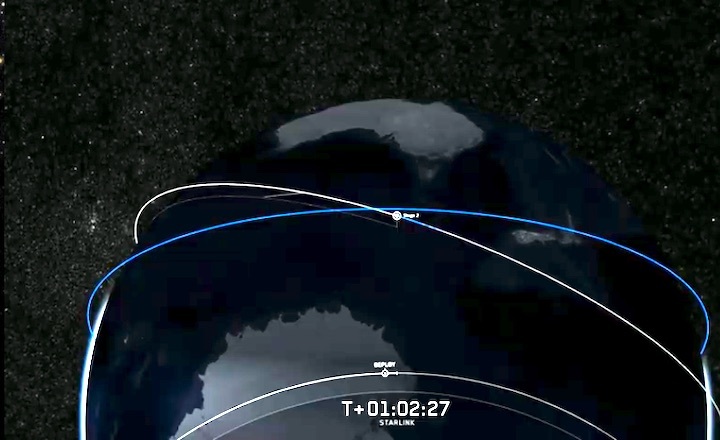
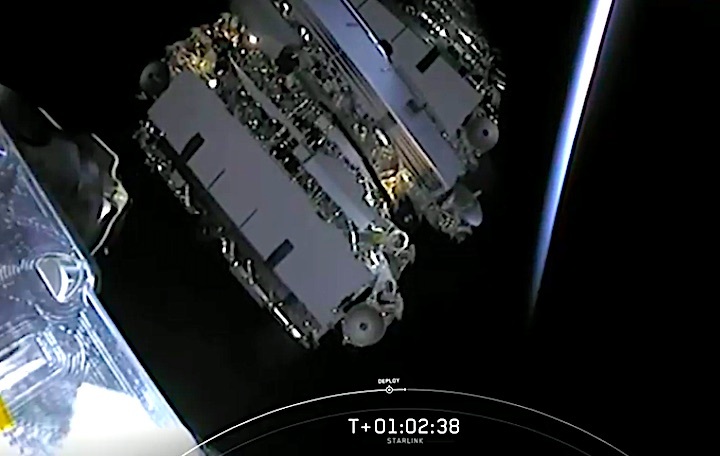
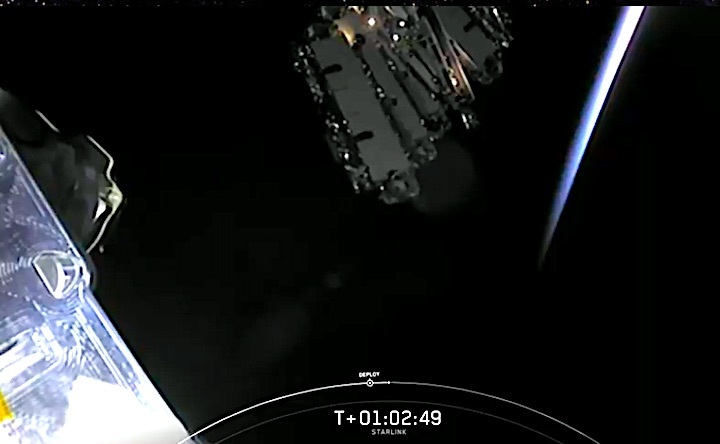
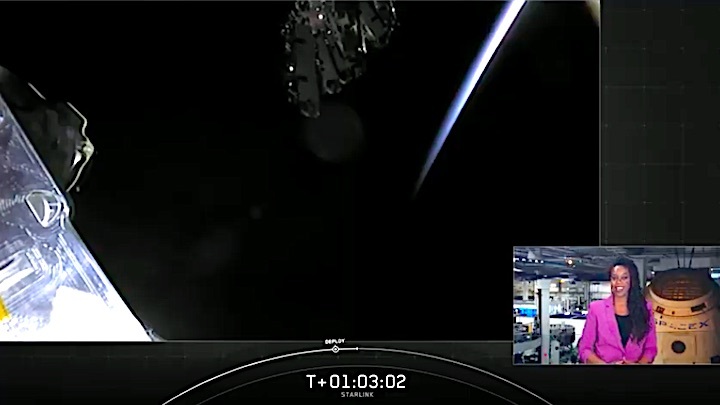
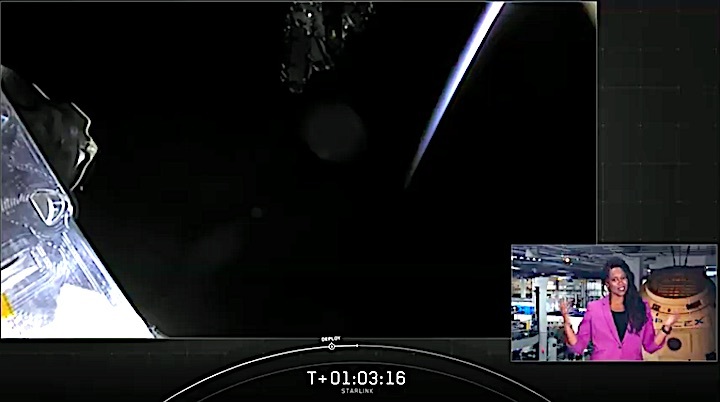
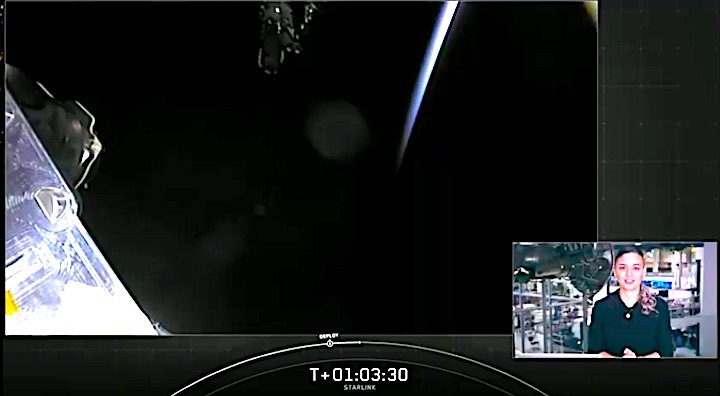
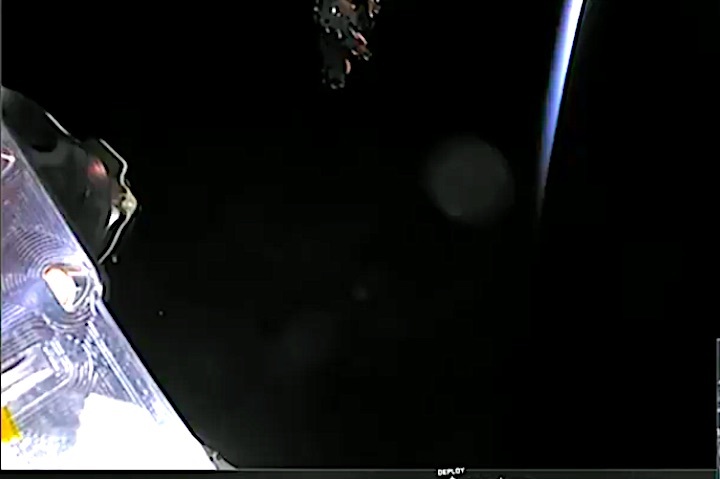
Quelle: SpaceX

